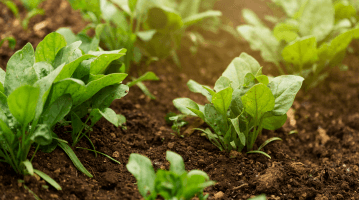What is agroforestry?
Trees in a field or just hedges round the edge?
It isn’t some newfangled invention, but the age-old practices of agroforestry are definitely back in fashion. And it goes without saying that agroforestry has a major role to play in restoring ecosystems, preserving biodiversity and even improving crop yields, too!
What are the principles of agroforestry?
Put simply, agroforestry is “a method of agricultural production that combines tree plantations with other crops on the same plot of land, with a view to achieving reciprocal benefits”. The trees planted don’t necessarily have to be forest species, they could also be fruit trees but, either way, agroforestry is now a highly recommended practice in agroecology.
Agroforestry just means trees, crops and livestock all coexisting within the same space, an age-old practice with benefits that are now being rediscovered, particularly in terms of use of resources, biological diversity, animal welfare and yields.
And it can be found in many forms, from hedgerows, meadow orchards and woodlands to poplar rows and walnut plantations on livestock farms, or other species associated with crops. Since around 2016, it has been encouraged by a variety of country-specific guidelines to help farmers develop their farms, and saw a real boost when it was added to the European Union’s Common Agricultural Policy.
What are the benefits of agroforestry?
Agroforestry is based on the principle of mutual benefits. For example, trees have an essential role to play in protecting the soil. Their root systems create the conditions that encourage the supply of water and minerals to surface crops. Agroforestry techniques allow trees to be arranged in such a way that they grow better, encouraging crops even more because they no longer have to compete with them.
Trees also help diversify production on the land (timber, energy, fruits, fodder, etc.). They also limit nitrate leakage in the deeper layers of the soil, which reduces groundwater pollution. They help improve soil fertility, as falling leaves provide a large supply of biomass that can be mineralised. When nitrogen-fixing species (such as acacia) are used at the same time, they can also contribute to a crop’s nitrogen supply, thereby reducing the need for synthetic additives. Trees can also protect crops and animals from bad weather or extreme climate conditions, limit soil erosion, encourage moisture retention and maintain the water cycle. They also have the ability to absorb carbon throughout their growth cycle, which improves the environmental balance of the area.
Trees, shrubs and hedges also play an essential role in biodiversity. They provide ecological continuity by offering shelter to passing animals. They allow predators of harmful species to get a foothold in the area and control their proliferation. They help sustain the biodiversity useful to crops, such as pollinators. They provide shelter and food for farm animals, improving their overall well-being. And they also make it possible to restore the diversity of landscapes, increasing their cultural and tourism appeal.
Studies carried out by France’s Institute of Agricultural Research (INRA) in the 1990s showed that yields increased when combining trees and crops rather than separating the two. Experiments on a walnut tree system in Restinclières in France showed that a 100ha agroforestry plot could produce as much biomass (wood and agricultural products) as a 136ha plot where trees and crops were kept separate – a gain of 36%.
What are the limits of agroforestry?
There aren’t many limits, but they essentially come down to two factors:
- Potential competition for resources between selected species and crops, particularly when it comes to water, nutrients and sunlight. That’s why it’s so important to have the right support when choosing and planting species on plots of land that match the farm’s objectives, a role often played by agricultural associations.
- Space requirements: even if tree planting is modest, i.e. in the region of 2-8% of the entire plot of land, on small farms where every square inch counts, trees can seem more of a hindrance than a help. Fortunately, there are plenty of agroforestry models that can adapt to different situations, and farmers can benefit from a number of support schemes, from regional to European level, to support their efforts.

What is organic farming ?
What do we really mean by “organic”? Klorane Botanical Foundation tells you everything you need to know about organic farming and its impact on biodiversity.
